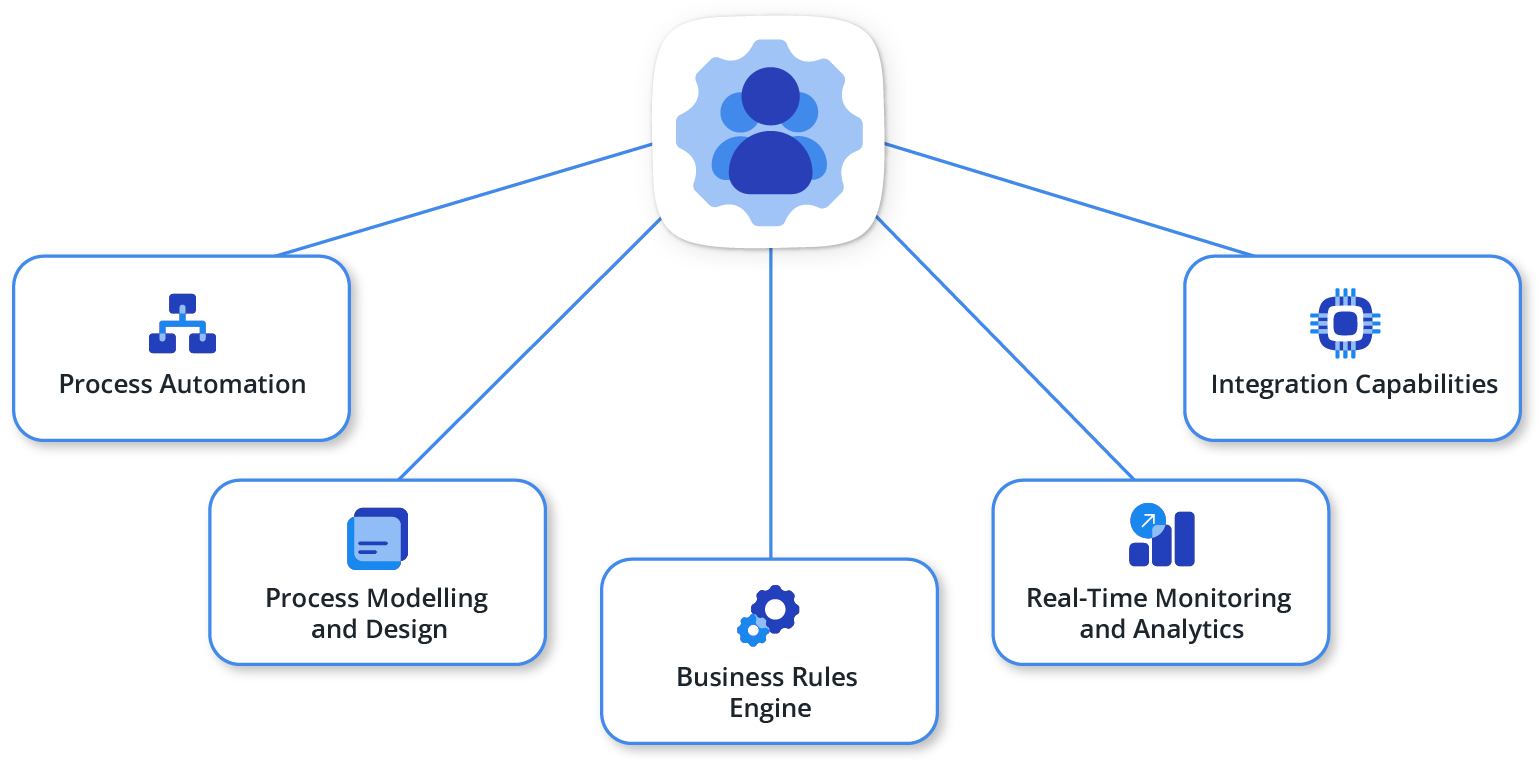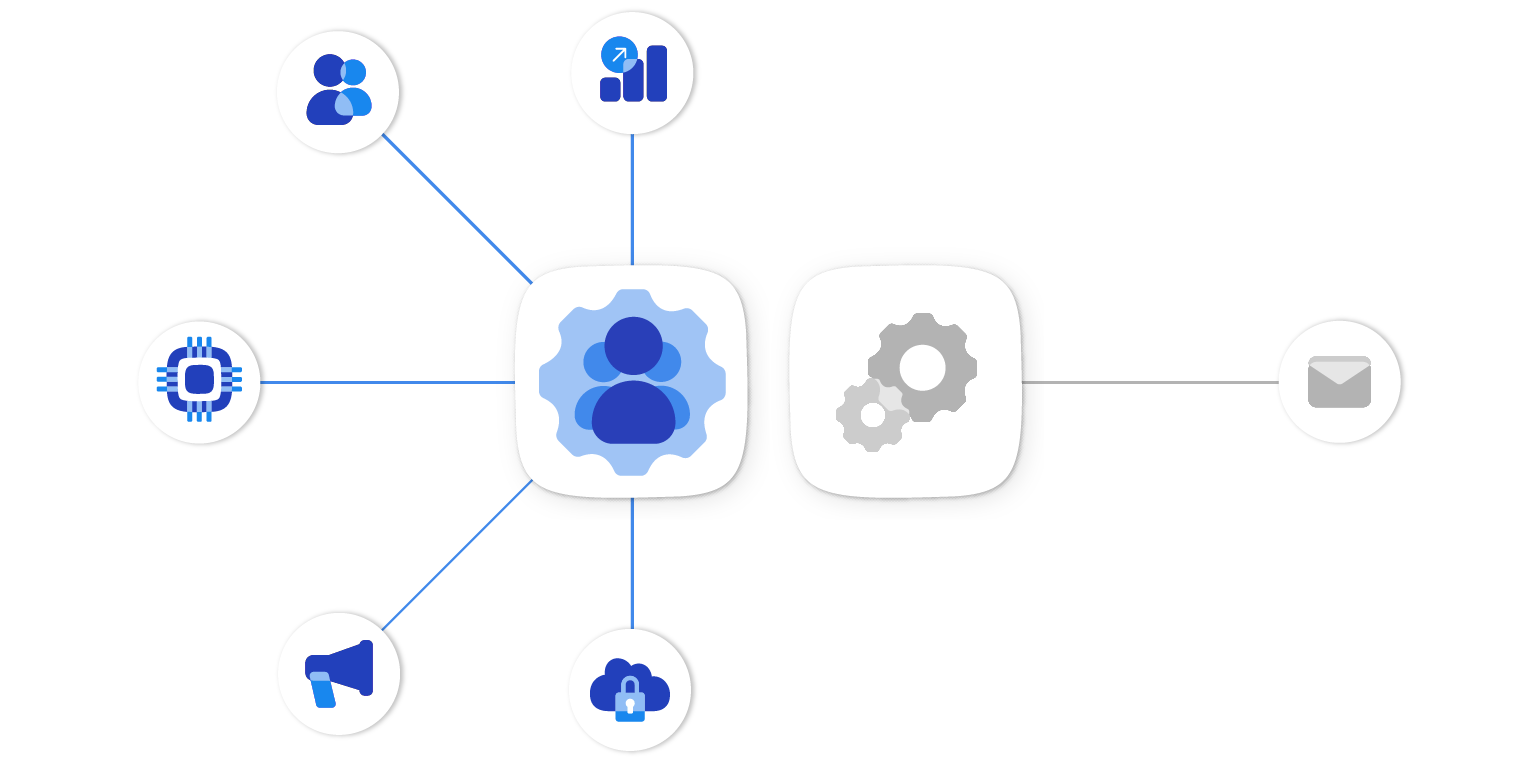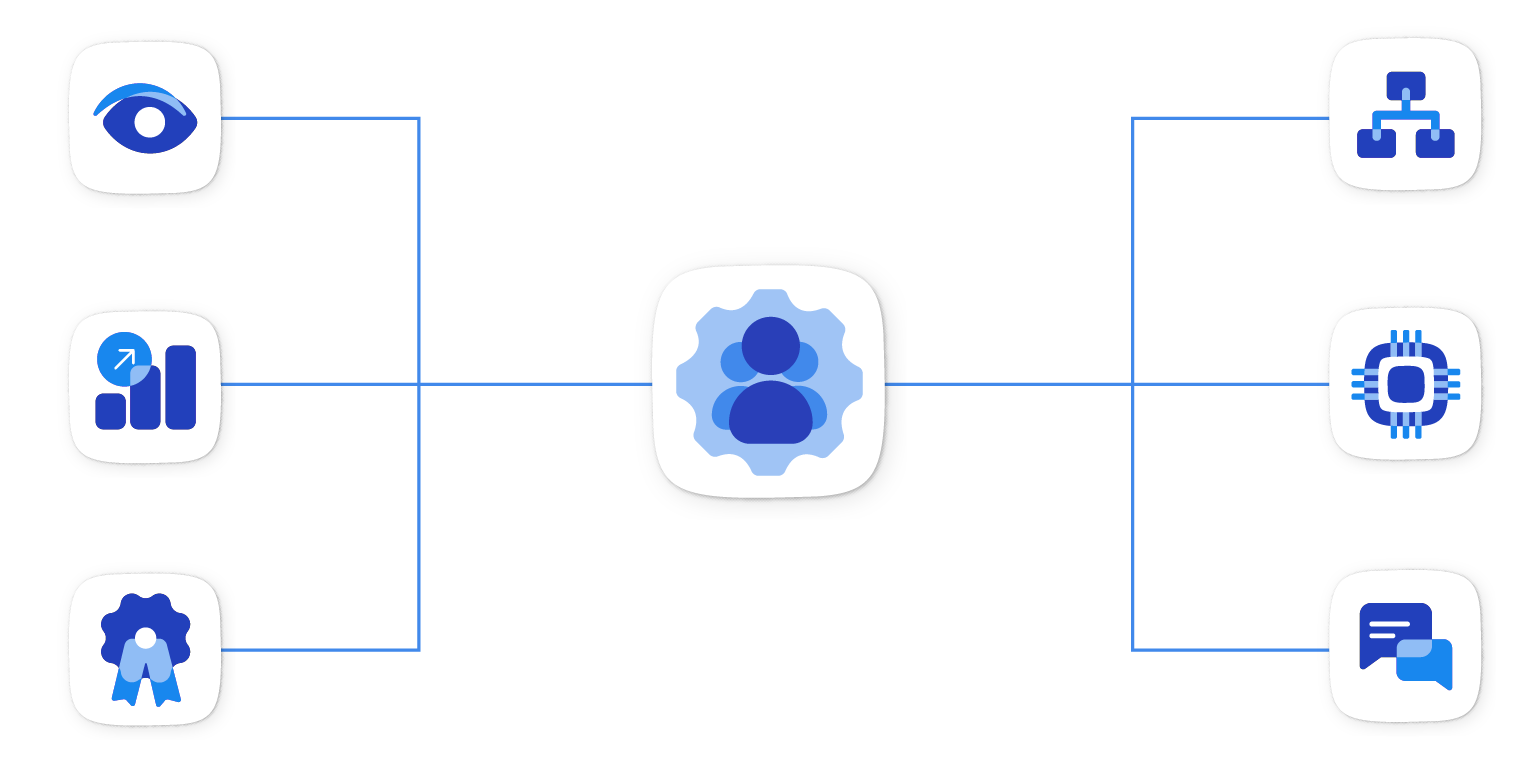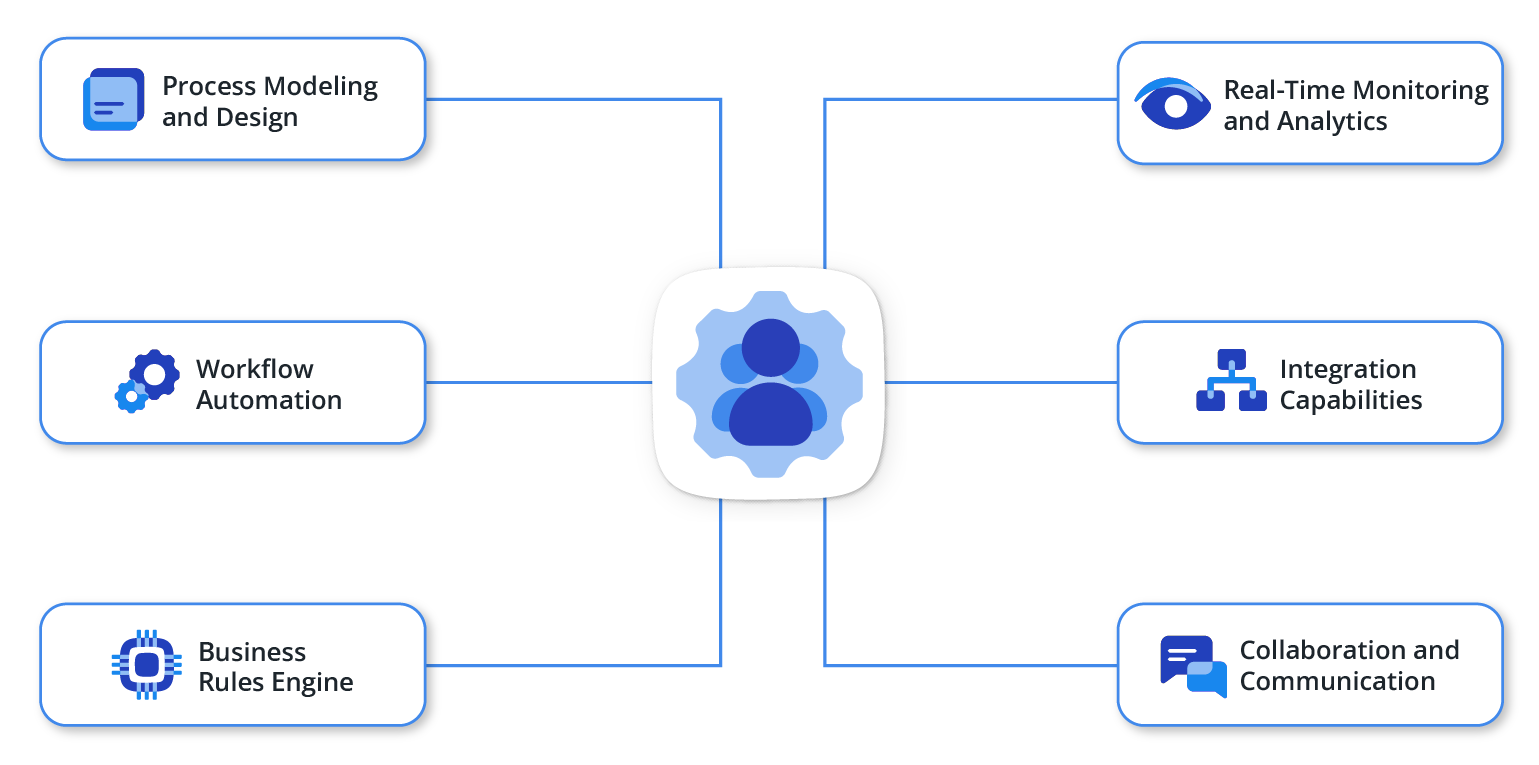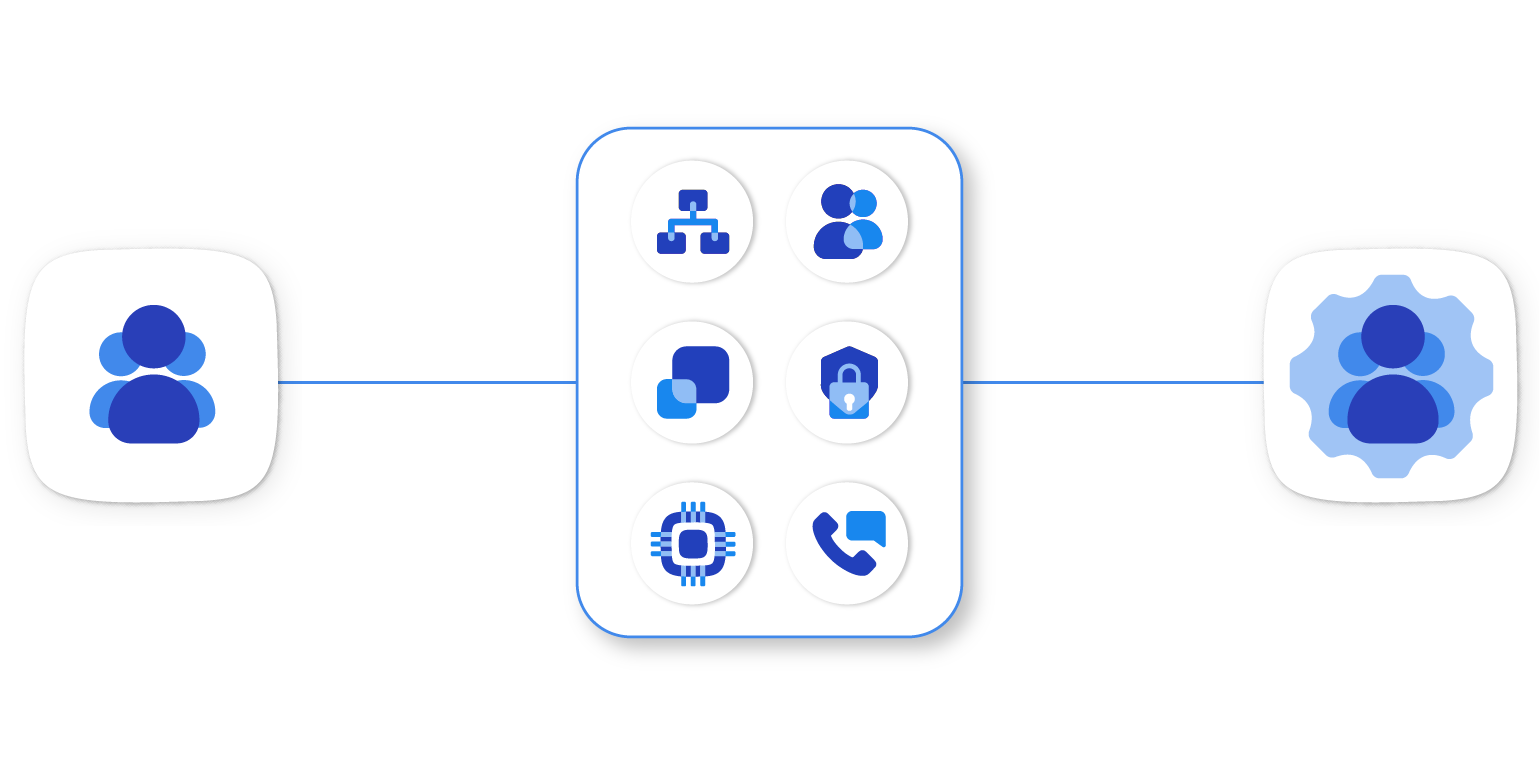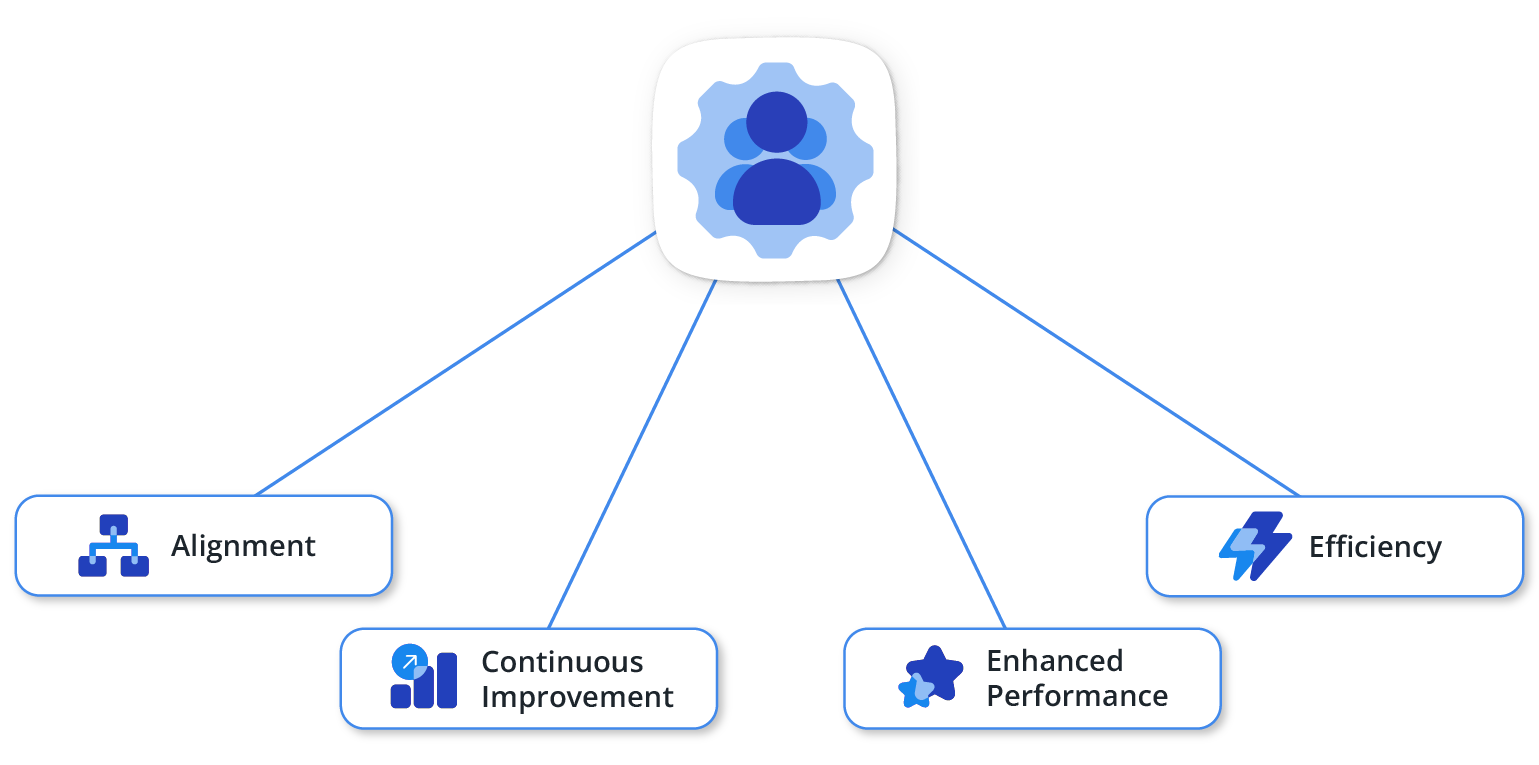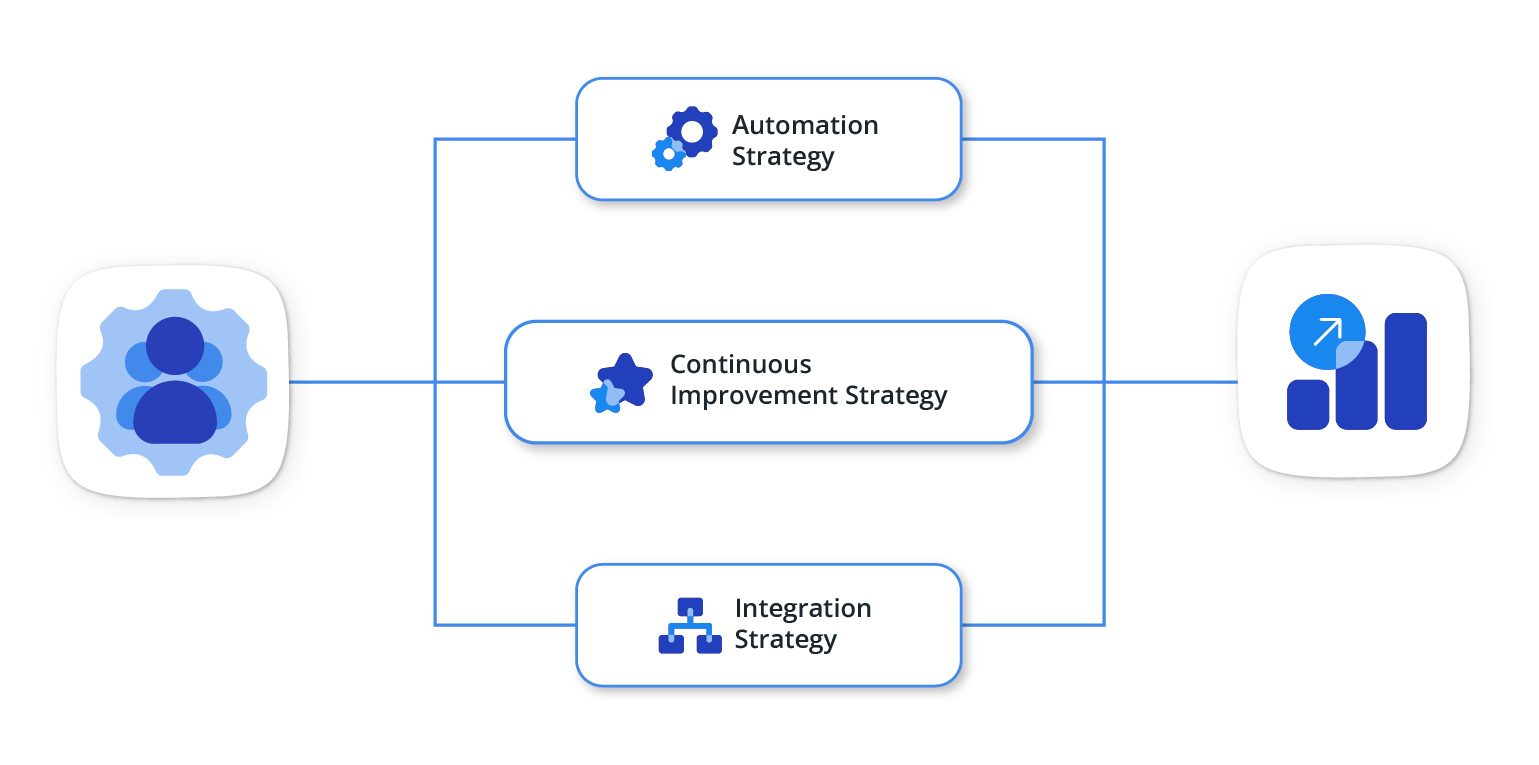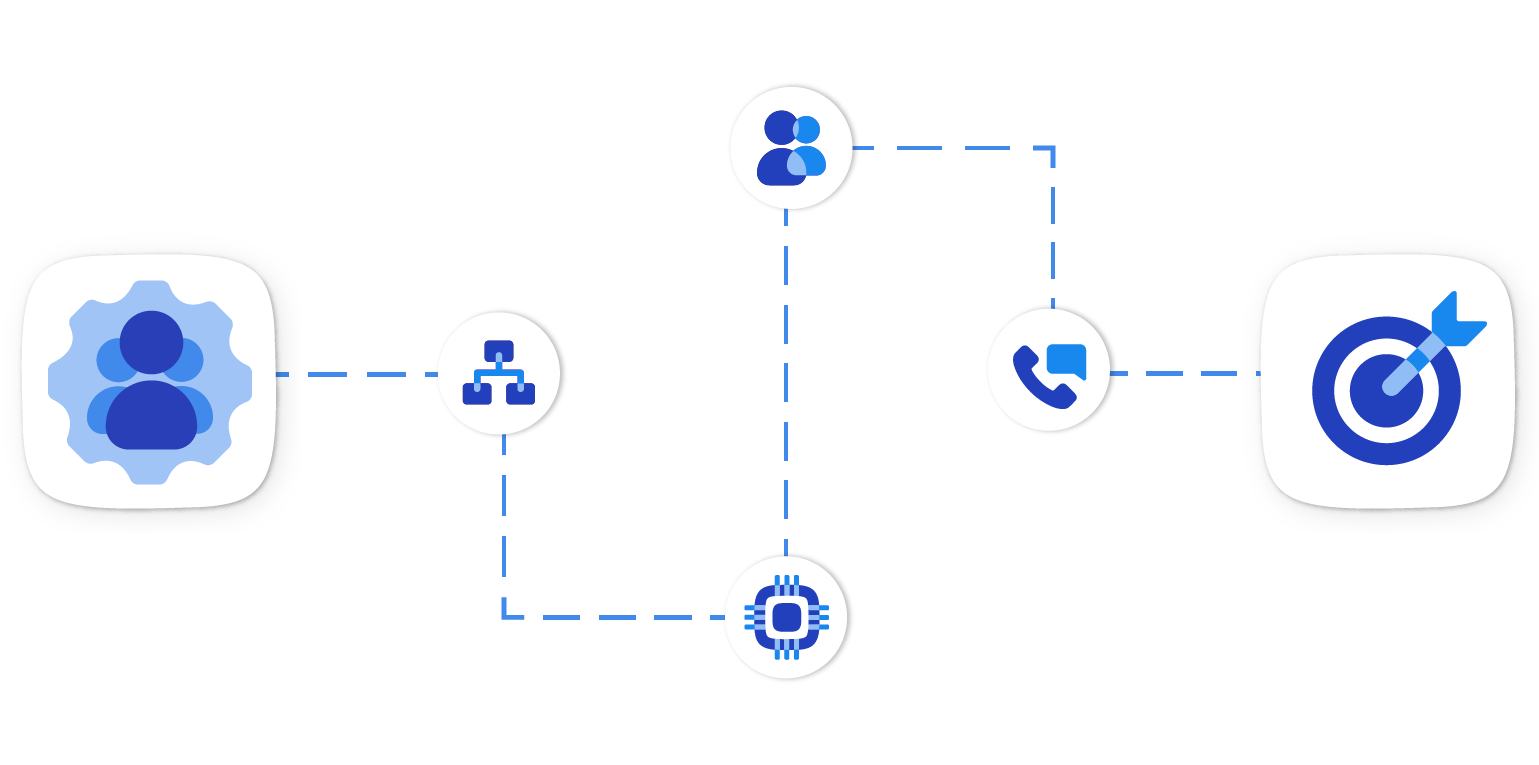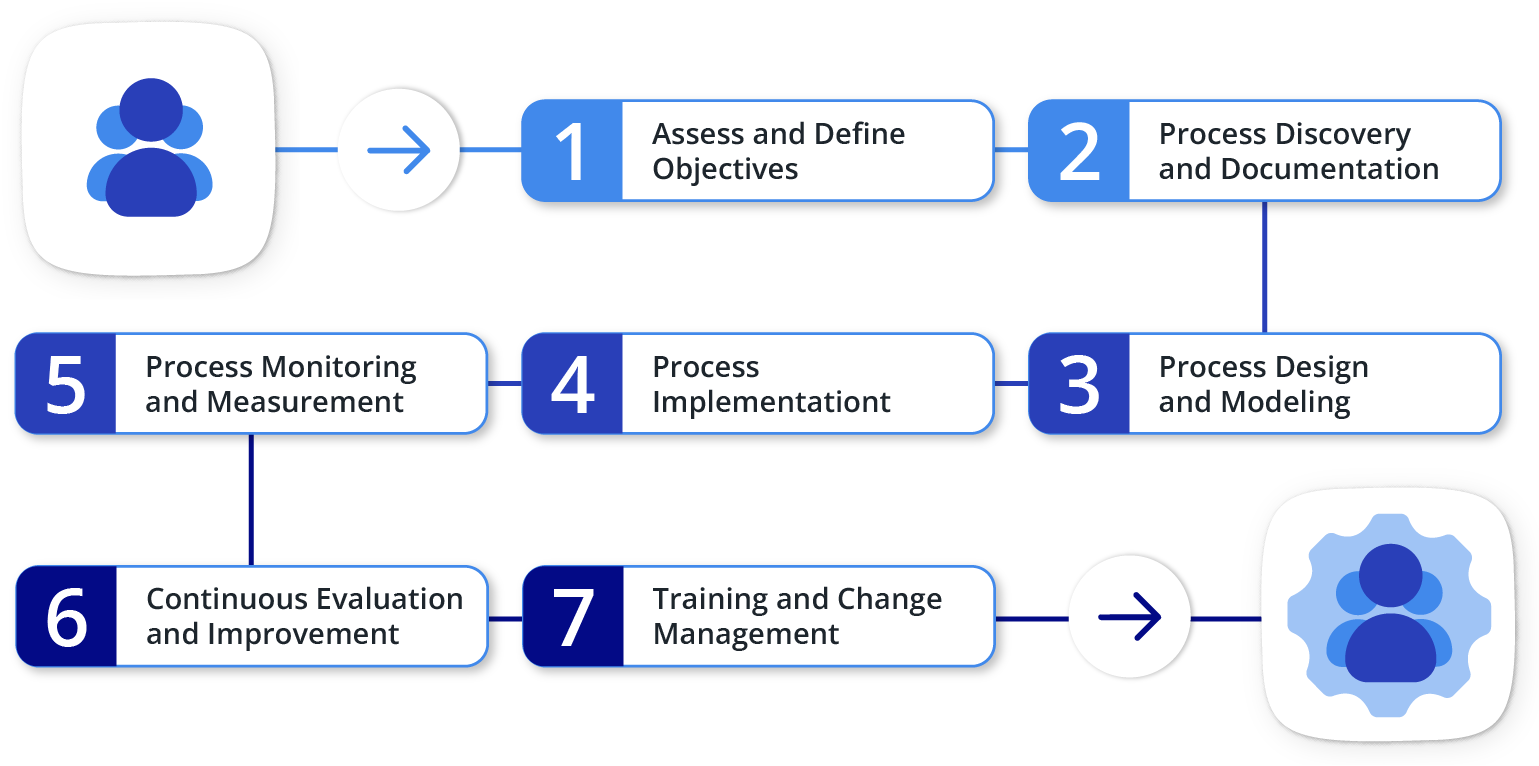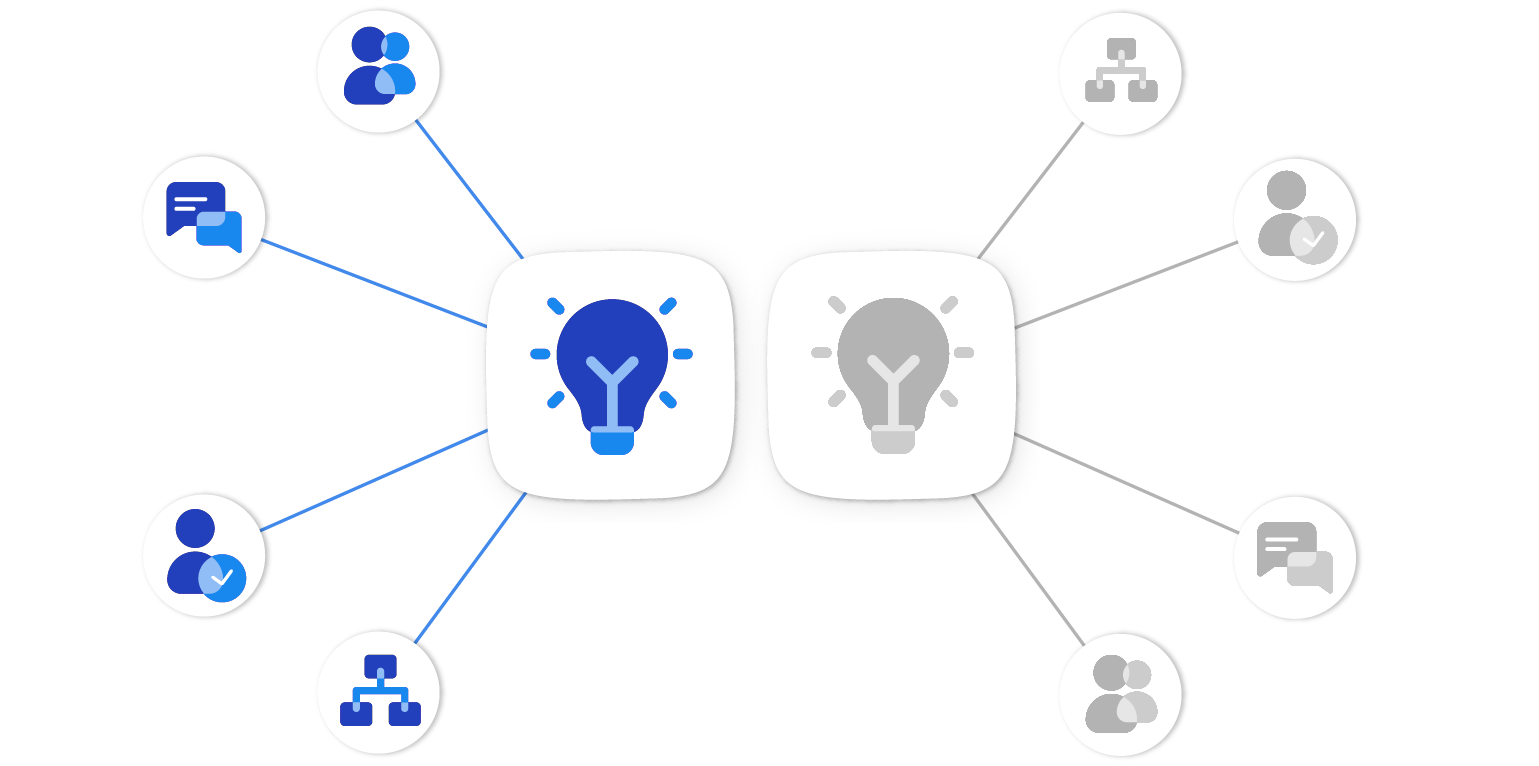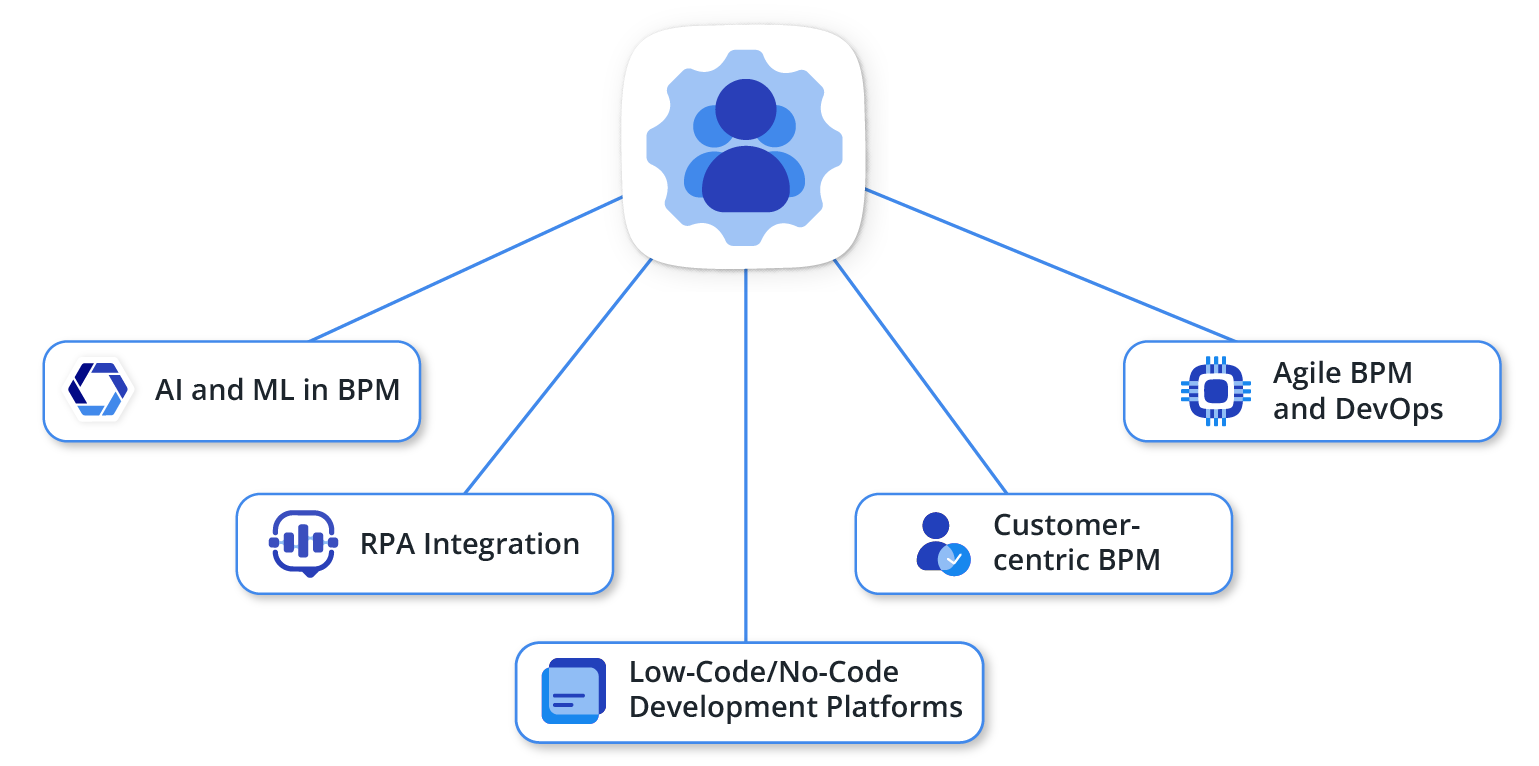In the world of enterprise organizations, efficient and streamlined business processes are key to achieving success. It is where business process management (BPM) steps in. It provides a systematic approach to optimizing workflows, enhancing productivity, and driving business growth.
In this comprehensive article, we’ll dive right into the realm of enterprise BPM, exploring its significance, the role of enterprise BPM software, and the wide range of topics it encompasses.
From strategies and implementation to success stories and emerging trends, this article aims to equip you with the knowledge and insights to harness the power of BPM and propel your organization toward operational excellence.
Whether you’re a seasoned professional or new to the field, this will serve as your definitive guide, unlocking the transformative potential of enterprise BPM and providing practical advice to navigate the intricacies of this dynamic discipline.
Get ready to explore the depths of enterprise BPM and be empowered to optimize your processes, improve efficiency, and achieve long-term success in the competitive enterprise landscape.
Understanding Enterprise Business Process Management (BPM)
In this modern business world, success and efficiency are often driven by how effectively an organization can manage its various processes. That’s where enterprise business process management (BPM) comes into play.
As an integral aspect of any large-scale organization, enterprise BPM signifies an enhanced approach to managing and optimizing business processes. It provides a platform where enterprise-level businesses can map, control, analyze, and improve their business procedures, thereby contributing to improved performance and productivity.
This section will dive deeper into what enterprise BPM is, why it’s crucial for large organizations, and how it distinguishes itself from standard business process management. Prepare to gain valuable insights into the realm of enterprise BPM and understand its transformative potential for your business.
What Is Enterprise BPM?
Enterprise business process management, often abbreviated as enterprise BPM, is a systematic approach that enables organizations to manage and improve their business processes. Its primary goal is to enhance the organization’s efficiency, agility, and adaptability by aligning business processes with clients’ needs and strategic business goals.
A central element of enterprise business process management is the integration of technology into business operations. It often involves using specialized software that provides a detailed and real-time view of business processes to facilitate more informed decision-making.
Enterprise BPM Core Features and Functionalities
Enterprise BPM offers various features and functionalities designed to facilitate efficient business process management. These include:
1. Process Automation
This feature allows repetitive tasks to be automated, saving time and reducing the potential for human error.
2. Process Modelling and Design
Enterprise BPM provides tools for visually modeling business processes, which can be particularly useful when designing and implementing new processes or refining existing ones.
3. Business Rules Engine
This feature enables the creation of rules that govern the operation of business processes, helping to ensure consistency and adherence to company policies.
4. Real-Time Monitoring and Analytics
Enterprise BPM tools often include capabilities for real-time process monitoring and advanced analytics, which can provide valuable insights and inform strategic decision-making.
5. Integration Capabilities
Enterprise business process management software usually offers integration with other enterprise systems, such as CRM or ERP systems, enabling a more unified approach to business process management.
Key Benefits of Employing Enterprise BPM
Implementing an enterprise BPM strategy unlocks a multitude of benefits.
Primarily, it can significantly enhance operational efficiency by automating repetitive tasks and streamlining workflows, freeing up valuable resources and time that can be redirected toward more strategic initiatives.
It also brings an increased level of agility to organizations. With the flexibility to adapt and modify business processes as needed, companies can swiftly respond to changes in the business environment, staying competitive and forward-thinking.
Moreover, enterprise BPM aids in ensuring regulatory compliance. Through a well-defined business rules engine, processes are guided to follow the necessary regulations and standards, mitigating risk, and fostering a culture of compliance.
Another remarkable benefit that enterprise BPM offers is the elevation of customer service. By aligning business processes to anticipate and meet customer needs, companies can deliver superior levels of service, fostering loyalty and long-term relationships.
Finally, the sophisticated analytics capabilities inherent to enterprise BPM software support more informed, data-driven decision-making. It provides valuable insights into processes and performance metrics, enabling businesses to identify areas for improvement, track progress, and strategize effectively.
Thus, leveraging the features and benefits of enterprise BPM allows organizations to optimize their business processes and drive improved performance and fruitful business outcomes.
Role of Enterprise BPM in Large Organizations
Enterprise BPM plays a crucial role in effectively managing complex business processes within large organizations. It serves as a guiding framework that helps orchestrate and align various departments, teams, and systems toward a common goal, ensuring streamlined operations and optimal performance.
One of the key contributions of enterprise BPM is its ability to manage complex business processes.
In large organizations, processes can be intricate and involve multiple stakeholders, departments, and systems. Enterprise business process management (BPM) provides a structured approach to mapping, analyzing, and optimizing these processes, enabling organizations to identify bottlenecks, inefficiencies, and areas for improvement.
By gaining a comprehensive understanding of their processes, organizations can implement strategic changes that lead to enhanced efficiency, reduced costs, and improved overall performance.
Enterprise BPM also plays a pivotal role in facilitating decision-making processes within an enterprise.
It provides real-time visibility into process performance, business congestions, and key metrics and empowers decision-makers with accurate and up-to-date information. This visibility allows for data-driven decision-making, enabling leaders to make informed choices that align with the organization’s strategic objectives.
Additionally, enterprise BPM allows organizations to simulate and analyze the potential impact of different scenarios and changes to processes, which aids in risk assessment and ensures well-informed decision-making.
The impact of enterprise business process management (BPM) on organizational efficiency and profit is also substantial. Organizations can eliminate redundant activities, minimize errors, and accelerate operations by optimizing and automating processes. This leads to increased efficiency and productivity so employees can focus on value-added tasks that drive business growth.
Moreover, enterprise BPM promotes standardization and consistency across processes to ensure that best practices are followed throughout the organization. This standardized approach enhances quality control, reduces variability, and improves customer satisfaction.
Furthermore, enterprise BPM enables organizations to identify and seize opportunities for process improvement, innovation, and optimization.
By continuously monitoring and analyzing processes, organizations can identify bottlenecks, inefficiencies, and areas of potential improvement. This allows proactive measures to be taken, fostering a culture of continuous improvement, and driving organizational excellence.
Ultimately, implementing enterprise BPM within large organizations results in improved operational efficiency, increased profitability, and a competitive edge in the marketplace. It empowers them to adapt quickly to changing market conditions, make informed decisions, and continuously optimize their processes for sustainable growth and success.
Enterprise BPM vs. Standard BPM
Enterprise business process management and standard business process management are two distinct approaches to managing business processes, each with its own focus and scope. While standard BPM caters to the needs of smaller organizations, enterprise BPM is specifically designed to meet the unique requirements of large organizations.
One key difference between enterprise BPM and standard BPM lies in the scope of their application. Standard BPM primarily focuses on individual departments or functional areas in an organization, addressing specific processes in those domains. It is often implemented as a stand-alone solution for process improvement within a limited context.
In contrast, enterprise BPM encompasses the entire organization, spanning multiple departments, systems, and stakeholders.
It recognizes the connection of processes across different areas and aims to streamline and optimize end-to-end processes that span the organization. It considers the complex and diverse nature of large organizations and addresses their unique requirements for managing processes at an enterprise-wide level.
Enterprise BPM also goes beyond the boundaries of process optimization. It involves integrating technology solutions to enable real-time process monitoring, automation, and data-driven decision-making on a large scale. This integration allows for greater visibility, control, and standardization of processes throughout the organization.
Large organizations often face specific challenges that require the implementation of enterprise BPM. These challenges include managing complex processes that involve multiple departments, systems, and stakeholders and dealing with a higher volume of transactions and a greater need for scalability.
Enterprise business process management (BPM) provides the necessary framework to address these challenges by providing a unified approach to process management, fostering collaboration, and ensuring consistency across the organization.
Moreover, large organizations typically operate in dynamic and competitive business environments. They need to be agile and adaptable to stay ahead.
Enterprise BPM facilitates agility by enabling organizations to quickly respond to changes in market conditions, regulatory requirements, or customer demands. It provides the tools and processes to identify, analyze, and optimize critical business processes, ensuring the organization can continuously evolve and improve its operations.
Introduction to Enterprise BPM Software
In the realm of enterprise business process management, technology plays a crucial role in empowering organizations to achieve optimal operational efficiency, agility, and strategic alignment. Enterprise BPM software emerges as the driving force behind these transformative capabilities.
These software tools provide a robust and comprehensive platform for organizations to effectively manage, automate, and optimize their business processes at an enterprise-wide scale.
The Role of Business Process Management (BPM) Software in Enterprise
BPM software plays a pivotal role in aiding enterprise-level business processes. It is a powerful tool that enables organizations to effectively manage, automate, and optimize their complex and interrelated processes. By leveraging BPM software, they gain the ability to streamline operations, improve efficiency, and drive strategic decision-making.
BPM software facilitates strategy implementation by providing a structured approach to aligning business processes with organizational goals. It allows enterprises to define and map out their strategic objectives and then break them down into actionable processes.
With BPM software, organizations can design, model, and implement processes that directly contribute to achieving their strategic vision. This alignment ensures that every process and activity in the organization is geared toward driving the desired outcomes.
Process tracking is another crucial aspect in which enterprise BPM software is vital.
By providing real-time visibility into the execution of processes, it enables big businesses to monitor the progress, performance, and bottleneck of their business processes. It captures relevant process data and metrics that allow stakeholders to track and measure key performance indicators (KPIs) that align with their strategic objectives.
This process transparency and monitoring capability empower organizations to identify areas for improvement, optimize process flow, and take timely corrective actions when necessary.
Using BPM software in enterprise management offers several benefits:
Improved Efficiency
BPM software automates manual and repetitive tasks, reducing errors, eliminating redundancy, and speeding up process execution. This leads to increased operational efficiency, productivity, and cost savings.
Enhanced Process Visibility and Control
BPM software provides a centralized platform to monitor and manage business processes across the organization. It offers real-time dashboards, reports, and analytics that give stakeholders a holistic view of processes. This visibility allows for better decision-making, early detection of business congestion, and proactive process optimization.
Standardization and Consistency
BPM software enables enterprises to establish standardized processes and enforce best practices throughout the organization. This consistency improves quality control, reduces variability, and ensures compliance with industry standards and regulations.
Agility and Adaptability
BPM software empowers enterprises to be agile and responsive to changes in the business environment. It allows for quick modification and optimization of processes to adapt to evolving market conditions, customer demands, or regulatory requirements.
Collaboration and Communication
BPM software fosters collaboration among process stakeholders, enabling seamless communication, feedback sharing, and cooperation on process improvement initiatives. This promotes cross-functional teamwork, knowledge sharing, and continuous learning.
Data-Driven Decision-Making
BPM software captures and analyzes process data, providing valuable insights for data-driven decision-making. It supports evidence-based decision-making, which allows organizations to identify trends, evaluate process performance, and make informed strategic choices.
By harnessing the capabilities of BPM software, enterprises can optimize their business processes, drive operational excellence, and align their activities with strategic goals. It empowers organizations to continuously improve, adapt to change, and stay competitive in a dynamic business landscape.
Essential Features of Enterprise BPM Software
Enterprise BPM software offers a range of essential features that contribute to effective process management and efficiency within organizations. These features provide the foundation for streamlining operations, optimizing processes, and achieving business goals.
Let’s explore some critical features of enterprise BPM software.
Process Modeling and Design
Enterprise BPM software should provide robust tools for modeling and designing business processes visually. This feature allows organizations to map out process flows, define activities, and capture dependencies. Process modeling facilitates a clear understanding of the sequence of steps and interactions within a process, aiding in process optimization and documentation.
Workflow Automation
Workflow automation is a core feature of enterprise BPM software. It allows organizations to automate manual tasks, reduce human error, and accelerate process execution. By defining rules and conditions, the software can automatically route tasks, send notifications, and trigger actions, ensuring seamless and efficient process flow.
Business Rules Engine
An enterprise BPM software should have a powerful business rules engine. This feature enables organizations to define and enforce business rules within their processes.
Business rules ensure compliance, consistency, and the ability to adapt to changing regulations or business requirements. The rules engine allows for rule-based decision-making and automated enforcement of policies.
Real-Time Monitoring and Analytics
Real-time monitoring and analytics capabilities are crucial for effective process management. Enterprise BPM software should provide intuitive dashboards and reporting tools to track process performance, measure key metrics, and identify business restrictions.
Advanced analytics and visualizations enable data-driven insights, which empower organizations to identify improvement opportunities and make informed decisions.
Integration Capabilities
Seamless integration with other enterprise systems is essential for end-to-end process management. Enterprise BPM software should allow integration with various systems such as CRM, ERP, or legacy applications. Integration enables the flow of data across systems, ensures data consistency, and supports efficient data exchange between processes.
Collaboration and Communication
Effective collaboration and communication features are crucial for successful process management.
Enterprise BPM software should provide a platform for process stakeholders to collaborate, share feedback, and contribute to process improvement initiatives. Features like discussion forums, document sharing, and task assignments enable cross-functional teamwork and promote effective communication.
These features of enterprise BPM software are critical for successful process management and efficiency. The absence or deficiency of these features can hinder organizations’ ability to optimize processes, achieve operational excellence, and drive continuous improvement.
Therefore, organizations should carefully evaluate and select enterprise BPM software that encompasses these essential features to maximize their potential for process optimization and efficiency gains.
Choosing the Right Enterprise BPM Software
Selecting the right enterprise BPM software is a crucial decision that can significantly impact an organization’s process management and overall efficiency. To make an informed choice, it should consider these key factors:
Compatibility
Compatibility is essential when choosing enterprise BPM software. Organizations should assess whether the software can integrate smoothly with their existing systems, such as CRM, ERP, or legacy applications. Compatibility ensures seamless data exchange, reduces duplication of efforts, and allows for a unified view of processes across the organization.
Scalability
It is vital to select a BPM software that can scale alongside the organization’s growth. As business requirements expand, the software should be capable of accommodating increased process complexity, transaction volumes, and user demands. Scalability ensures long-term viability and adaptability, supporting the organization’s evolving needs.
User-Friendly Interfaces
The software’s user interface is important in user adoption and productivity. An intuitive and user-friendly interface simplifies process modeling, task execution, and reporting, reducing the learning curve for users. A well-designed interface enhances user experience, increases efficiency, and encourages broader user engagement.
Security and Compliance
Data security is paramount in enterprise BPM software. Organizations must ensure that the software adheres to industry-standard security protocols, including data encryption, access controls, and compliance with relevant regulations (e.g., GDPR, HIPAA). Robust security measures safeguard sensitive information and protect against unauthorized access.
Customer Support
The availability of reliable customer support is crucial in selecting enterprise BPM software. Organizations should assess the vendor’s support offerings, response times, and access to technical experts. Responsive customer support ensures timely assistance in case of issues or questions, enabling smooth implementation and ongoing software usage.
Software Updates
Regular software updates and enhancements demonstrate the vendor’s commitment to improving their BPM solution. Organizations should inquire about their update frequency, release cycles, and process for updates.
Up-to-date software ensures access to new features, bug fixes, and performance improvements so organizations can stay current and take advantage of evolving BPM capabilities.
Vendor Reputation and Experience
Consider the vendor’s reputation and experience in the BPM industry. Evaluate their track record, customer reviews, and case studies to gauge their credibility and ability to deliver a reliable and robust BPM software solution. A reputable vendor with a proven track record instills confidence in the software’s quality and the vendor’s commitment to customer satisfaction.
By carefully considering these factors, organizations can choose an enterprise BPM software that aligns with their specific needs and supports their goals for process management.
A compatible and scalable solution with a user-friendly interface enhances user adoption and productivity. Strong security measures protect critical data, while reliable customer support and software updates ensure a smooth and uninterrupted BPM journey.
Ultimately, selecting the right enterprise BPM software sets the foundation for successful process optimization, efficiency gains, and long-term business success.
Navigating Enterprise BPM Strategies
Enterprise BPM is not only about managing and optimizing processes but also about aligning them with the larger business strategy. Successful organizations recognize the importance of strategizing in enterprise BPM and leverage various strategies to achieve their goals.
Let’s explore the significance of strategizing, the different types of strategies, and how they tie into the larger business strategy.
Importance of Strategy in Enterprise BPM
Strategy is vital in enterprise BPM as it provides a clear roadmap for achieving organizational objectives and ensuring seamless business process management. Strategic planning is crucial in enterprise BPM for several reasons, including driving alignment, fostering efficiency, and enabling continuous improvement and enhanced performance.
Alignment
A well-defined strategy ensures alignment between business processes and the organization’s overarching goals and vision. It establishes a clear connection between process improvements and strategic objectives, ensuring that efforts are focused on activities that drive value and support business priorities.
Strategic alignment helps eliminate process inefficiencies and ensures resources are utilized effectively to achieve desired outcomes.
Efficiency
Strategic planning enables organizations to identify key processes that require optimization and allocate resources accordingly. They can streamline operations, reduce waste, and eliminate restrictions by prioritizing process improvements based on strategic importance.
A well-crafted strategy ensures that process management efforts are targeted toward high-impact areas, leading to improved efficiency and resource optimization.
Continuous Improvement
Strategic planning fosters a culture of continuous improvement within an organization. By setting clear objectives, defining performance metrics, and regularly reviewing progress, organizations can identify areas for enhancement and implement iterative improvements.
This continuous improvement mindset helps organizations stay agile, adapt to changing market dynamics, and optimize their business processes to meet evolving customer needs.
Enhanced Performance
A well-crafted strategy has a direct impact on the overall business performance. By aligning processes with strategic objectives, organizations can optimize their operations, reduce costs, enhance customer satisfaction, and gain a competitive edge.
Effective business process management, supported by a strategic approach, enables organizations to deliver consistent quality, improve service levels, and drive customer loyalty. This, in turn, positively impacts financial performance, market share, and long-term sustainability.
Types of Enterprise BPM Strategies
Enterprise BPM encompasses various strategies organizations can employ to optimize their processes, improve efficiency, and drive continuous improvement. Three common types of enterprise BPM strategies include automation, integration, and continuous improvement strategies.
Automation Strategy
Automation strategy focuses on leveraging technology to automate manual tasks and streamline processes. When organizations automate repetitive and rule-based activities, they can reduce human error, enhance efficiency, and improve process cycle times.
An automation strategy brings numerous advantages, including improved efficiency, reduced costs, and enhanced accuracy.
By minimizing manual intervention, automation enables processes to run quickly and seamlessly, boosting productivity and efficiency. Furthermore, it eliminates the need for manual labor, resulting in cost savings and optimal resource allocation. Automated processes also significantly reduce the potential for human error for consistent and accurate execution.
Organizations typically employ automation strategies when dealing with repetitive tasks, high-volume processes, or activities prone to errors. It is particularly useful in industries such as manufacturing, finance, and customer service, where standardization and efficiency are critical.
Integration Strategy
Integration strategy focuses on merging various systems, applications, and data sources to achieve seamless information flow across processes and departments. By breaking down data silos and enabling real-time data exchange, organizations can improve process visibility, collaboration, and decision-making.
Organizations employ an integration strategy to align fragmented processes, harmonize data, and improve overall process visibility and coordination. It is especially relevant when dealing with complex and interdependent processes across multiple departments or integrating disparate enterprise systems.
Continuous Improvement Strategy
A continuous improvement strategy aims to cultivate a culture of ongoing process enhancement through iterative improvements, learning from past experiences, and implementing changes to drive incremental optimization. It offers various benefits, including process optimization resulting in improved efficiency, reduced waste, and enhanced performance.
Moreover, continuous improvement nurtures innovation and adaptability by encouraging employees to identify improvement opportunities and explore new ideas. Additionally, it ensures customer-centricity by aligning processes with customer needs and expectations, driving satisfaction and loyalty.
Organizations employ continuous improvement strategies when prioritizing agility, adaptability, and a culture of innovation. It is relevant across industries and is particularly beneficial in dynamic and competitive markets where organizations must evolve and continuously improve to stay ahead.
Organizations can employ different types of enterprise BPM strategies based on their specific needs and goals. By leveraging these strategies, organizations can optimize their processes, improve efficiency, and achieve sustainable business growth.
Aligning BPM Strategies with Business Goals
Aligning BPM strategies with broader business objectives is essential for driving business growth, enhancing efficiency, and achieving organizational success.
When BPM strategies are closely aligned with overall business goals, they become powerful tools for driving transformative change and delivering tangible results. This strategic alignment enables organizations to streamline operations, reduce waste, and improve efficiency.
By identifying and prioritizing processes that directly contribute to revenue generation, customer satisfaction, or market expansion, organizations can focus their BPM efforts on activities that drive business growth. This ensures BPM initiatives are aligned with the organization’s strategic direction, maximizing their impact on the bottom line.
Additionally, aligning BPM strategies with customer-centric business objectives ensures that processes deliver value to customers. By focusing on customer needs, organizations can optimize processes to enhance customer experience, increase satisfaction, and drive loyalty.
Moreover, strategic alignment in BPM supports change management and fosters a culture of innovation.
BPM initiatives that closely align with strategic goals can drive process innovation, promote cross-functional collaboration, and encourage employee engagement. This alignment enables organizations to adapt to market dynamics, embrace emerging technologies, and proactively address changing customer demands.
Real-World Examples of Strategic BPM Alignment
Real-world examples of successful strategic alignment in BPM can be seen in organizations across various industries:
Amazon
Amazon’s strategic objective of providing exceptional customer service is closely aligned with its BPM strategies. Its focus on process optimization, automation, and continuous improvement has allowed it to deliver fast and efficient order fulfillment, seamless customer experiences, and industry-leading logistics operations.
Toyota
Toyota’s renowned “Toyota Production System” is a prime example of aligning BPM strategies with business objectives. Its focus on lean manufacturing and continuous improvement has resulted in highly efficient and standardized processes, reduced waste, and exceptional product quality, positioning it as a leader in the automotive industry.
Starbucks
Starbucks aligns its BPM strategies with its objective of delivering a personalized customer experience. It has implemented BPM initiatives to streamline its ordering and fulfillment processes, leverage mobile technology, and provide personalized recommendations to customers, resulting in enhanced customer satisfaction and increased loyalty.
In each example, strategic alignment between BPM strategies and broader business objectives has been pivotal in driving business growth, efficiency, and customer value. By aligning BPM initiatives with strategic goals, organizations can leverage BPM as a catalyst for transformative change and create a competitive advantage in their industry.
Implementing Enterprise BPM
Implementing enterprise BPM requires careful planning, collaboration, and a systematic approach. To ensure successful implementation, organizations need to consider these key steps, address potential challenges, and leverage BPM software effectively.
Step 1: Assess and Define Objectives
Assess the current state of processes, identify pain points, and define clear objectives for BPM implementation. This step lays the foundation for aligning BPM initiatives with organizational goals and sets the stage for process optimization.
Step 2: Process Discovery and Documentation
Conduct a thorough analysis of existing processes, document workflows, and identify process dependencies. This step enables organizations to gain visibility into their processes, understand interdependencies, and identify areas for improvement.
Step 3: Process Design and Modeling
Design and model improved processes based on the defined objectives and identified pain points. Use BPM software tools to create process models, visualize workflows, and simulate process scenarios. This step helps organizations envision the desired future state and ensures process changes are well-planned and aligned with business objectives.
Step 4: Process Implementation
Execute the designed processes by implementing changes, automating tasks, and integrating BPM software solutions. This step involves collaboration between business and IT teams to ensure seamless execution and successful deployment of process improvements.
Step 5: Process Monitoring and Measurement
Establish mechanisms for real-time process monitoring, data collection, and performance measurement. Leverage BPM software capabilities to track process metrics, identify bottlenecks, and analyze performance against predefined KPIs. This step enables organizations to monitor process effectiveness and identify areas for further enhancement.
Step 6: Continuous Evaluation and Improvement
Regularly evaluate process performance, gather feedback from stakeholders, and identify opportunities for continuous improvement. Embrace a culture of ongoing evaluation and refinement, leveraging insights from data analysis and stakeholder input.
This step ensures that BPM initiatives stay aligned with evolving business needs and supports the organization’s ability to adapt to changes.
Step 7: Training and Change Management
Invest in training programs and change management efforts to ensure the successful adoption of BPM practices throughout the organization. Equip employees with the necessary knowledge and skills to embrace the changes, promote collaboration, and foster a culture of continuous improvement.
Throughout the implementation process, it is essential to emphasize the significance of continuous evaluation and improvement. BPM is an iterative journey, and organizations must embrace a mindset of ongoing refinement to achieve optimal results.
By following these steps and committing to continuous evaluation and improvement, organizations can harness the power of enterprise BPM to drive operational excellence, enhance customer experiences, and achieve sustainable business success.
Overcoming Challenges in BPM Implementation
Implementing BPM can come with its share of challenges. Organizations may encounter obstacles during the implementation process that hinder the successful adoption and integration of BPM practices. However, with proactive measures and effective strategies, these challenges can be overcome.
Potential Challenges in BPM Implementation
From resistance to change to poor communication, organizations must navigate potential obstacles to ensure successful BPM implementation. Understanding these challenges and proactively addressing them is essential for maximizing the benefits of BPM and achieving seamless process optimization.
Resistance to Change
One of the most common challenges in BPM implementation is resistance to change. Employees may be hesitant to adopt new processes or technologies, particularly if they are accustomed to existing working methods.
Lack of Employee Engagement
Without active employee engagement and involvement, BPM initiatives may struggle to gain momentum. Employees may not fully understand the purpose and benefits of the changes, leading to a lack of enthusiasm or willingness to embrace new processes.
Insufficient Leadership Support
Leadership support and commitment are crucial for the success of BPM implementation. Without clear direction and support from top management, BPM initiatives may lack the necessary resources, authority, and prioritization to be effective.
Inadequate Communication
Poor communication about the purpose, goals, and benefits of BPM can lead to misunderstandings, skepticism, and resistance. Insufficient communication channels or ineffective messaging can hinder the organization’s ability to gain buy-in and support from stakeholders.
Practical Solutions
Successfully implementing BPM requires practical solutions to address the challenges above and ensure smooth adoption. Here are some key strategies to overcome hurdles and drive effective BPM implementation:
Leadership Involvement and Support
Strong leadership involvement is crucial for overcoming resistance to change and driving successful BPM implementation.
Leaders should communicate the vision, benefits, and expected outcomes of BPM initiatives. They should actively participate in the implementation process, demonstrate commitment, and provide the necessary resources and support to ensure project success.
Effective Communication and Employee Engagement
Clear and consistent communication is vital to address misconceptions and foster understanding. Communicate the rationale behind BPM implementation, its potential impact on employees and the organization, and how it aligns with strategic objectives.
Provide regular updates, encourage two-way communication, and address concerns and questions to keep employees engaged and informed throughout the process. Actively involve employees in the BPM implementation process by seeking their input, soliciting feedback, and involving them in process redesign efforts.
Comprehensive Training and Change Management Strategies
Offer comprehensive training programs to ensure employees understand the new processes, technologies, and their roles within them. Training should emphasize the benefits of BPM, highlight the impact on job roles, and provide guidance on effectively using BPM tools and systems.
Employ change management strategies to address resistance to change, create a supportive environment, and involve change champions or advocates to promote the benefits of BPM.
Continuous Monitoring and Evaluation
Continuously monitor the progress of BPM implementation and measure KPIs to track the effectiveness of the new processes. Identify areas for improvement, gather feedback from stakeholders, and make necessary adjustments to ensure continuous refinement and optimization.
By prioritizing leadership involvement, effective communication, comprehensive training, and continuous monitoring, organizations can overcome challenges in BPM implementation. Engaging employees, addressing resistance, and fostering a culture of continuous improvement contribute to the successful adoption and integration of BPM practices.
Success Stories of Enterprise BPM Implementation
Real-world examples of successful enterprise BPM implementations demonstrate the transformative impact of BPM on organizations. These success stories highlight how organizations overcame challenges, leveraged BPM strategies, and achieved significant improvements in efficiency, customer satisfaction, and overall business performance.
Case Study 1: Cisco Systems
Cisco Systems, a global technology leader, faced challenges with fragmented and complex business processes across different departments and geographies. The lack of standardized processes resulted in inefficiencies, communication gaps, and reduced agility.
To address these challenges, Cisco implemented a comprehensive BPM strategy. It focused on standardizing processes, improving collaboration, and enhancing efficiency. Using BPM software, it could model, automate, and optimize its processes, ensuring consistency and alignment with its business objectives.
The implementation of BPM yielded significant results for Cisco. They achieved streamlined operations, reduced cycle times, and improved process visibility. The standardized processes enabled them to enhance customer satisfaction, reduce costs, and respond to market demands with increased agility.
This case study highlights several key takeaways. Standardizing processes and leveraging BPM software can drive operational efficiency, improve collaboration, and enhance customer satisfaction. It is crucial to align BPM initiatives with business objectives and involve cross-functional teams for successful implementation.
Case Study 2: Barclays
Global financial institution Barclays faced challenges with disparate systems and complex processes, resulting in fragmented customer service and hindered operational efficiency.
To address these challenges, Barclays embarked on a BPM implementation journey. Its focus was on streamlining processes, improving customer experience, and enhancing operational efficiency. It placed particular emphasis on automation and integration to eliminate manual tasks, improve data flow, and enable real-time decision-making.
The results of the BPM implementation at Barclays were remarkable. They witnessed significant improvements in customer service, with reduced processing times and enhanced operational efficiency. Automation and integration of processes enabled faster loan approvals, streamlined account opening procedures, and improved compliance.
This case study highlights the importance of automation and integration in enhancing customer experience and operational efficiency within a financial institution like Barclays. By adopting a customer-centric approach and leveraging BPM technologies, organizations can achieve tangible benefits, driving overall organizational success.
Barclays’ success demonstrates the transformative power of BPM when applied strategically in the financial industry. When organizations optimize processes and embrace automation and integration, they can improve customer service, streamline operations, and position themselves for long-term success in a competitive market.
Case Study 3: Lufthansa Cargo
Leading global cargo airline Lufthansa Cargo encountered challenges with complex logistics processes and operational inefficiencies, which led to delayed shipments and customer dissatisfaction.
To address these challenges, Lufthansa Cargo implemented BPM to optimize its cargo handling processes, improve transparency, and enhance operational efficiency. It leveraged BPM software to automate manual tasks, improve coordination, and ensure seamless data exchange.
The results of the BPM implementation at Lufthansa Cargo were remarkable. It experienced improved process visibility, reduced lead times, and enhanced customer satisfaction. The automation of processes enabled better tracking and tracing of shipments, increasing reliability and on-time deliveries.
Lufthansa Cargo’s success story demonstrates the potential of BPM to revolutionize logistics operations, optimize processes, and elevate customer service within the cargo industry. By embracing BPM strategies and technologies, organizations can overcome operational challenges, improve process visibility, and deliver outstanding service to their customers.
These real-world success stories illustrate the transformative impact of BPM implementation. Overcoming challenges, aligning BPM with business objectives, engaging employees, and leveraging technology are key factors in achieving successful outcomes.
By adopting these lessons learned, organizations can unlock the full potential of BPM and drive significant improvements in efficiency, customer satisfaction, and overall business performance.
Future of Enterprise BPM
The future of enterprise BPM is filled with exciting possibilities as organizations adapt to emerging trends and leverage innovative technologies. For them to stay ahead in this dynamic landscape, it is crucial to embrace these changes and proactively explore new avenues for process optimization and business growth.
Emerging Trends in Enterprise BPM
The landscape of enterprise BPM is constantly evolving, driven by advancements in technology, changing market dynamics, and evolving customer expectations. Organizations must stay ahead of emerging trends to remain competitive and leverage new opportunities.
Here are some upcoming trends in the BPM landscape, their potential impact on enterprise-level businesses, and ways companies can prepare for these changes.
AI and ML in BPM
The integration of AI and ML technologies into BPM is reshaping how organizations automate and optimize their processes. With AI and ML, businesses can leverage advanced capabilities to analyze vast amounts of data, make intelligent predictions, and gain real-time insights for process improvement. The impact of AI and ML in BPM is profound, offering enhanced operational efficiency and accuracy.
Incorporating AI and ML in BPM enables organizations to automate routine tasks on a larger scale than ever before. These technologies excel at intelligent decision-making, allowing businesses to make data-driven choices based on sophisticated algorithms and predictive analytics.
When organizations leverage AI-powered process automation and intelligent decision-making capabilities, they can streamline their operations, minimize errors, and achieve greater productivity and cost savings.
The benefits of AI and ML in BPM extend beyond efficiency gains. By automating tasks and leveraging advanced analytics, organizations can make faster and more accurate decisions, improving outcomes and customer experiences. Manual efforts are reduced, which frees employees to focus on high-value activities that require human judgment and creativity.
Companies should actively explore AI solutions that seamlessly integrate with their existing BPM systems to prepare for the transformative impact of AI and ML in BPM.
It is important to invest in employee training on AI technologies and foster a culture that embraces AI-driven process improvements. Collaborating with technology partners and staying informed about the latest advancements in AI and their applications in BPM will ensure organizations stay ahead in the rapidly evolving business landscape.
RPA Integration
Robotic Process Automation (RPA) involves automating repetitive, rule-based tasks using software robots or “bots.” When integrated with BPM, RPA brings significant advantages by automating end-to-end processes, enhancing efficiency, accuracy, and scalability. It takes on high-volume transactional tasks, freeing human resources for more value-added activities.
The integration of RPA with BPM has a profound impact on businesses. It drives increased process automation, resulting in reduced operational costs, improved process speed, and enhanced accuracy. By incorporating RPA into BPM, organizations gain the ability to handle complex workflows, streamline interdepartmental processes, and boost overall productivity.
To prepare for the integration of RPA with BPM, businesses should identify processes suitable for automation through RPA and carefully evaluate RPA tools that align with their BPM objectives. It is essential to develop a roadmap for RPA adoption, considering security, governance, and compliance requirements.
Effective collaboration between business and IT teams is vital to successfully implement and manage RPA solutions.
By leveraging RPA integration with BPM, organizations can unlock tremendous benefits. They can automate tedious and repetitive tasks, reduce errors, and achieve greater process efficiency. Embracing RPA within the BPM framework empowers businesses to optimize their operations, achieve scalability, and reallocate resources strategically for maximum impact.
Low-Code/No-Code Development Platforms
Low-code/no-code development platforms empower users with minimal coding knowledge to create applications and automate processes.
These platforms offer visual interfaces, pre-built modules, and drag-and-drop functionality, simplifying the development and customization of BPM applications. With low-code/no-code platforms, business users can actively participate in process automation and contribute to digital transformation initiatives.
The impact of low-code/no-code platforms on businesses is significant. These platforms democratize process automation by enabling non-technical users to drive innovation and accelerate digital transformation.
By reducing dependency on IT resources, low-code/no-code platforms expedite application development and foster agility in responding to changing business needs. Business users can now actively create, modify, and enhance BPM applications without extensive coding knowledge.
To prepare for this transformative change, businesses should explore low-code/no-code platforms that integrate seamlessly with their BPM software and align with their specific business requirements.
It is essential to foster a culture of citizen development by providing training and support to users, equipping them with the skills to create and customize BPM applications. Collaboration with IT teams is crucial to establish governance, ensure proper integration, and implement security controls to safeguard data and processes.
When organizations embrace low-code/no-code development platforms, they can unlock new opportunities for process automation and digital transformation. Empowering business users to actively participate in BPM application development leads to increased efficiency, innovation, and agility in meeting the ever-evolving demands of the business landscape.
Customer-centric BPM
Customer-centric BPM focuses on designing and optimizing processes from the customer’s perspective. It entails mapping the customer journey, identifying pain points, and tailoring processes to deliver exceptional experiences. By aligning processes with customer needs, organizations can drive customer satisfaction, loyalty, and business success.
The impact of customer-centric BPM on businesses is significant. It enables organizations to differentiate themselves in the market by providing personalized, seamless, and consistent customer experiences. By understanding and meeting customer expectations, they can achieve improved customer satisfaction, increased customer retention, and a positive brand reputation.
To prepare for this customer-centric shift, organizations should adopt methodologies such as customer journey mapping and design thinking. These approaches help gain insights into customer needs and preferences, allowing for the design of customer-centric processes.
Gathering customer feedback, leveraging analytics, and employing customer-centric process design principles are also crucial. Investing in BPM software that offers features for customer experience management and process personalization can further support the execution of customer-centric BPM strategies.
By embracing customer-centric BPM, organizations can differentiate themselves in the competitive landscape and build long-lasting customer relationships. When they understand and meet customer expectations, they can drive customer loyalty, fuel business growth, and position themselves as leaders in their respective industries.
Agile BPM and DevOps
Applying Agile methodologies and DevOps practices to BPM is gaining traction as it enables organizations to achieve rapid process improvements and effectively respond to evolving business requirements.
Agile BPM involves iterative development, continuous collaboration, and frequent process refinements, while DevOps principles facilitate seamless integration, deployment, and maintenance of BPM solutions.
These approaches empower organizations to swiftly respond to market changes, deliver process improvements in shorter cycles, and maintain a high level of flexibility and adaptability. By fostering collaboration between business and IT teams, Agile BPM and DevOps reduce time-to-market, promote innovation, and foster a culture of continuous improvement.
To prepare for this transformative change, organizations should adopt Agile BPM methodologies and establish cross-functional teams to promote collaboration and frequent feedback loops.
Embracing DevOps practices throughout the BPM solution development, testing, and deployment lifecycle is crucial. This includes implementing automation, emphasizing communication and collaboration, and establishing an environment that encourages experimentation, learning, and continuous process optimization.
By embracing Agile BPM and DevOps, organizations can achieve greater agility, faster time-to-market, and enhanced process adaptability that enable them to stay ahead of the competition, respond effectively to changing market demands, and drive continuous improvement in their business processes.
Ultimately, staying abreast of emerging trends in enterprise BPM is essential for organizations to seize new opportunities, drive innovation, and remain competitive.
Embracing AI and ML technologies, integrating RPA, leveraging low-code/no-code platforms, adopting customer-centric BPM, and implementing agile methodologies and DevOps practices will empower organizations to enhance operational efficiency, deliver exceptional customer experiences, and drive digital transformation.
By proactively preparing for these changes, companies can position themselves for future success in the evolving BPM landscape.
Staying Ahead: Continuous Learning in BPM
In the dynamic landscape of BPM, staying ahead is imperative for organizations to maintain their competitive edge, drive innovation, and adapt to changes. Continuous learning plays a pivotal role in enabling organizations and professionals to keep pace with BPM advancements, acquire new skills, and embrace emerging technologies.
One of the key benefits of continuous learning in BPM is enhancing efficiency and innovation.
Professionals engaged in continuous learning are equipped with new tools, techniques, and best practices that foster process optimization, automation, and innovation. This leads to improved efficiency, reduced costs, and enhanced customer experiences as organizations leverage their knowledge to drive continuous improvement in their processes.
Embracing continuous learning in BPM gives organizations a significant competitive advantage. By staying informed about the latest trends and technologies, they can identify opportunities for improvement, deliver superior process management solutions, and outperform their competitors.
Continuous learning allows organizations to be at the forefront of BPM developments, enabling them to anticipate industry changes and proactively implement strategies for success.
From a professional standpoint, continuous learning in BPM fosters personal growth, job satisfaction, and career advancement. Expanding their skill sets and knowledge base makes professionals more valuable assets to their organizations.
Continuous learning also cultivates a culture of growth, engagement, and empowerment within organizations, which leads to higher employee retention and increased productivity.
Thus, continuous learning is not just beneficial but necessary for organizations and professionals seeking to thrive. By embracing ongoing learning initiatives, organizations can drive innovation, optimize their processes, and adapt to industry changes, while professionals can enhance their skills, advance their careers, and contribute to their organization’s success.
Methods for Fostering a Culture of Continuous Learning
To cultivate a culture of continuous learning in BPM, organizations can implement various methods and initiatives that prioritize ongoing skill development and knowledge sharing.
Establishing dedicated learning initiatives focused on BPM is key. This involves designing workshops, training sessions, webinars, and conferences that keep employees informed about the latest trends, technologies, and methodologies in BPM.
By providing these learning opportunities, organizations ensure that employees stay up-to-date with industry advancements and are equipped with the knowledge to drive process improvement.
Encouraging knowledge sharing in the organization is another vital aspect. Creating a culture of collaboration and open communication encourages employees to share their experiences, success stories, and lessons learned from BPM projects.
Establishing platforms for internal discussions, forums, and communities of practice facilitates knowledge exchange, allowing professionals to learn from each other’s experiences and insights.
Investing in professional development is crucial for fostering a culture of continuous learning. Organizations should provide opportunities for employees to enhance their BPM skills through certifications, online courses, and workshops.
Supporting employees in attending industry conferences and networking events enables them to stay connected with BPM thought leaders, gain insights from peers and stay informed about the latest trends and practices in the field.
Promoting cross-functional collaboration is also essential. Encouraging teams with diverse backgrounds and expertise to work together fosters learning across different departments. This allows professionals to gain diverse perspectives, learn from each other’s experiences, and develop a holistic understanding of BPM practices.
By breaking down silos and encouraging collaboration, organizations create an environment that nurtures continuous learning.
Leveraging technology is another effective method for enabling continuous learning in BPM. Organizations can use e-learning platforms, learning management systems, and online resources to provide self-paced learning opportunities.
Offering access to curated content, articles, videos, and case studies allows employees to continuously learn at their own convenience, further promoting ongoing skill development.
By implementing these methods for fostering a culture of continuous learning, organizations can create an environment where employees are encouraged to expand their knowledge, acquire new skills, and actively contribute to the success of BPM initiatives.
This culture of continuous learning not only enhances individual professional growth but also drives innovation, efficiency, and long-term success in BPM practices.
Long-Term Benefits of Staying Updated in the BPM Landscape
Staying updated in the ever-evolving landscape of BPM brings a multitude of long-term benefits to organizations. By staying informed about the latest trends, technologies, and best practices, organizations can unlock several advantages that contribute to their success and competitive advantage.
One significant benefit of staying updated is the ability to foster innovation and agility. By keeping abreast of emerging technologies and industry advancements, organizations can adopt cutting-edge tools and practices that drive innovation.
This enables them to design and implement forward-thinking processes, enhance customer experiences, and differentiate themselves from competitors. Being at the forefront of BPM developments allows organizations to adapt quickly to market changes, seize new opportunities, and maintain a competitive edge.
Continuous learning in BPM also leads to process optimization. Professionals with up-to-date knowledge and skills can identify process business restrictions, inefficiencies, and improvement opportunities.
This enables organizations to optimize their processes, streamline workflows, and achieve operational excellence. By continuously refining and enhancing their processes, they can drive efficiency, reduce costs, and deliver better outcomes.
Furthermore, staying updated in the BPM landscape offers significant cost savings and efficiency gains. When organizations leverage the latest methodologies and technologies, they can streamline operations, eliminate manual effort, and improve resource allocation.
Continuous learning empowers professionals to implement process automation, RPA, and intelligent process automation (IPA), resulting in increased efficiency and cost savings.
Customer-centricity is another key advantage of staying updated in BPM. Organizations that align their processes with customer needs and expectations can deliver exceptional experiences.
By adopting customer-centric BPM practices, they can enhance customer satisfaction, build loyalty, and drive business growth. Staying updated allows organizations to understand evolving customer preferences and design processes that prioritize customer value and satisfaction.
Lastly, staying updated in the BPM landscape helps organizations attract and retain top talent. A culture of continuous learning signals a commitment to employee development and growth.
By investing in employees’ professional development and providing opportunities to stay updated, organizations create an environment that fosters engagement, job satisfaction, and loyalty. This, in turn, attracts skilled professionals who are eager to contribute to an organization that values ongoing learning and advancement.
Wrapping Up: BPM for Enterprise Organizations
Enterprise BPM is pivotal in driving operational excellence, enhancing efficiency, and achieving business success for enterprise organizations. By streamlining processes, automating tasks, and optimizing workflows, it empowers organizations to deliver seamless customer experiences, reduce costs, and drive innovation.
The transformative potential of enterprise BPM software cannot be overstated. With features such as process modeling, workflow automation, real-time monitoring, and collaboration tools, it enables organizations to orchestrate complex business processes with precision and agility. It provides the foundation for process optimization, data-driven decision-making, and continuous improvement.
Looking ahead, BPM will continue to shape the future of enterprise strategies. Emerging trends such as AI and automation, customer-centricity, and agile methodologies will further drive the evolution of BPM practices.
Organizations that embrace these trends and leverage BPM technologies will gain a competitive edge, adapt to market changes, and deliver exceptional customer experiences.
By harnessing the power of enterprise BPM, organizations can unlock new levels of efficiency, agility, and innovation. It fosters collaboration, breaks down silos, and empowers employees to drive process improvements. The benefits are far-reaching—from increased operational efficiency and cost savings to improved customer satisfaction and long-term business growth.
As enterprise organizations navigate the complexities of today’s business landscape, embracing enterprise BPM becomes more crucial than ever.
It is a strategic imperative for organizations to invest in BPM software, nurture a culture of continuous improvement, and align BPM initiatives with broader business objectives. By doing so, they can lay the foundation for sustained success and remain at the forefront of their industries.
In the fast-paced and ever-changing world of enterprise organizations, enterprise BPM is not just a tool or a methodology. It is a mindset, a commitment to operational excellence, and a catalyst for growth.
Harness the power of enterprise BPM with Kizen’s AI and automation. Get in touch with our experts and embark on your journey to unprecedented operational speed and agility ASAP.
Frequently Asked Questions
Get answers to common questions about enterprise BPM, its implementation, its benefits, and best practices in this FAQ section. Gain clarity and insights on how to successfully navigate the world of enterprise BPM.
What industries can benefit from enterprise BPM?
Enterprise BPM offers tons of benefits across a wide range of industries, making it universally applicable to organizations seeking operational excellence. Regardless of the sector, it has seen notable success in various industries.
In the financial services industry, BPM enhances loan origination, claims processing, risk management, and customer onboarding. Healthcare organizations leverage it for patient admissions, billing, claims management, and compliance.
In manufacturing, BPM streamlines supply chain processes, production planning, quality management, and inventory control. Retail and e-commerce benefit from it in order fulfillment, inventory management, returns processing, and customer support.
Telecom companies use BPM for customer service processes, order provisioning, network operations, and billing. Energy and utility companies rely on it for metering and billing processes, outage management, and customer service operations.
These examples highlight the diverse applicability of enterprise BPM, enabling organizations across industries to improve efficiency, customer satisfaction, and overall business performance.
What skills are necessary to implement and manage enterprise BPM effectively?
Implementing and managing enterprise BPM effectively requires a diverse set of technical and soft skills.
From a technical standpoint, proficiency in BPM software is essential to leverage its features for process modeling, automation, monitoring, and optimization. Additionally, a strong foundation in data management and analytics enables organizations to extract insights and make data-driven decisions.
On the other hand, soft skills such as project management, effective communication, and collaboration are equally crucial. Project management skills ensure the successful execution of BPM initiatives, while communication skills facilitate stakeholder engagement and foster collaboration across teams.
Moreover, a commitment to ongoing learning and professional development is key, as BPM is a constantly evolving field. Continuous learning, training programs, and certifications provide professionals with the knowledge and expertise to adapt to changes and leverage emerging BPM practices.
By combining these technical and soft skills and embracing continuous learning, organizations can effectively implement and manage BPM, driving process optimization and achieving sustainable business outcomes.
How long does it typically take to implement enterprise BPM?
The timeline for implementing enterprise business process management can vary depending on several factors. These factors include the size and complexity of the organization, the scope of BPM implementation, the readiness of existing processes, and the level of stakeholder engagement.
Proper planning and resource allocation play a crucial role in determining the implementation timeline. Organizations that invest time in thoroughly analyzing their current processes, identifying improvement areas, and defining clear goals and objectives can streamline the implementation process.
Moreover, leveraging an enterprise business process management software solution can expedite the implementation timeline by providing pre-built process templates, automation capabilities, and collaboration tools.
By utilizing an integrated software solution, organizations can achieve faster process mapping, automation, and deployment, leading to significant time savings.
However, it’s important to note that while software solutions can accelerate the implementation process, careful consideration should be given to customization, data migration, and training needs, which may impact the overall timeline.
Ultimately, the successful implementation of enterprise BPM relies on a well-planned approach, effective resource allocation, and the utilization of appropriate tools and technologies to expedite the process.
What are the common challenges in implementing enterprise BPM?
Implementing enterprise BPM can present various challenges that organizations must address.
One common hurdle is resistance to change, as employees may hesitate to adopt new processes and technologies. Moreover, the complexity of existing processes can pose difficulties in effectively mapping and streamlining them. Additionally, integrating BPM technology with existing systems and ensuring smooth data exchange can be a challenge.
To overcome these challenges, organizations can take proactive measures.
These include implementing change management strategies to address resistance, simplifying and optimizing processes to tackle complexity, collaborating closely with IT teams for seamless technology integration, establishing data governance practices for data integrity, and engaging stakeholders early on for their support and involvement.
Furthermore, providing comprehensive training and education to employees equips them with the knowledge and skills to embrace BPM changes.
By taking proactive steps and addressing these challenges head-on, organizations can navigate the implementation of enterprise BPM more effectively.



